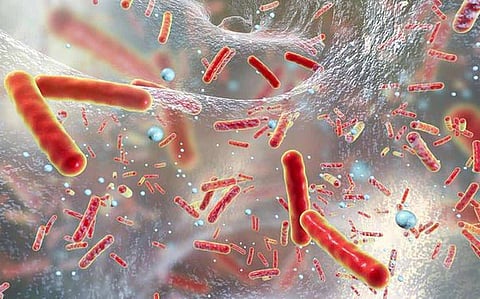

Since the discovery of penicillin, antibiotics have become the cornerstone of modern medicine. However, the continued efficacy of these essential drugs is uncertain due to the global dissemination of antibiotic-resistance determinants. Moreover, the decreasing development of new antibiotics in the private sector that has resulted from a lack of economic incentives is exacerbating this already dire problem. Indeed, without immediate action to discover and develop new antibiotics, it is projected that deaths attributable to resistant infections will reach 10 million per year by 2050.
Further, due to the rapid emergence of antibiotic-resistant bacteria, there is a growing need to discover new antibiotics. To address this challenge, scientists from MIT and Harvard trained a deep neural network capable of predicting molecules with antibacterial activity. They performed predictions on multiple chemical libraries and discovered a molecule from the Drug Repurposing Hub—halicin—that is structurally divergent from conventional antibiotics and displays bactericidal activity against a wide phylogenetic spectrum of pathogens including Mycobacterium tuberculosis and carbapenem-resistant Enterobacteriaceae.
Halicin also effectively treated Clostridioides difficile and pan-resistant Acinetobacter baumannii infections in murine models. Additionally, from a discrete set of 23 empirically tested predictions from >107 million molecules curated from the ZINC15 database, this new model identified eight antibacterial compounds that are structurally distant from known antibiotics. This work highlights the utility of deep learning approaches to expand scientists' antibiotic arsenal through the discovery of structurally distinct antibacterial molecules.
As noted by the Hindu Business Line, speaking about the discovery, James Collins, the Termeer Professor of Medical Engineering and Science at MIT stated in a press release: "We wanted to develop a platform that would allow us to harness the power of artificial intelligence to usher in a new age of antibiotic drug discovery." He added that the researchers at MIT revealed this "amazing" molecule which is arguably one of the most potent antibiotics that has ever been discovered.
According to Collins, the research in the field of antibiotics has hit its breakeven point as very few new antibiotics have been developed. Most of those are slightly different variants of existing drugs. He further claimed that the development is prohibitively costly, requires significant time, and limited to a narrow spectrum of chemical diversity.
As per the official release, in laboratory tests against five species of bacteria, the researchers found that eight of the molecules showed antibacterial activity, and two were particularly powerful. The researchers now plan to test these molecules further. They will also screen more such antibacterial activities in the molecules to discover new compounds that are not the variant of the existing ones.
The researchers intend to use their model to design new antibiotics and to optimize existing molecules.
Roy Kishony, a professor of biology and computer science at Technion (the Israel Institute of Technology) commented: "This groundbreaking work signifies a paradigm shift in antibiotic discovery and indeed in drug discovery more generally."
Join our WhatsApp Channel to get the latest news, exclusives and videos on WhatsApp
_____________
Disclaimer: Analytics Insight does not provide financial advice or guidance on cryptocurrencies and stocks. Also note that the cryptocurrencies mentioned/listed on the website could potentially be scams, i.e. designed to induce you to invest financial resources that may be lost forever and not be recoverable once investments are made. This article is provided for informational purposes and does not constitute investment advice. You are responsible for conducting your own research (DYOR) before making any investments. Read more here.
